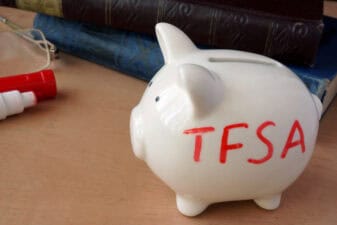Income investors have flocked to Baytex Energy Corp. (TSX: BTE)(NYSE: BTE) for years, but the stock has hit a rough patch in the past few months and shareholders are wondering if they should hang on for a rebound or bite the bullet and get out.
Let’s take a look at Baytex’s situation right now to see if you should buy, hold, or sell the stock.
Solid production and cash flow
In its Q3 2014 earnings statement Baytex reported a 41% year-over-year increase in production compared to Q3 2013. Delivered funds from operations jumped 49%, and the Q3 operating netback came in at $40.86 per barrel of oil equivalent (boe). The strong growth is being led by the company’s Eagle Ford assets, which are delivering better-than-expected results, driving both production and funds from operations to record levels.
In the Q3 earnings statement, Baytex increased its production guidance for the second half of 2014 by 5% and maintained its exploration and development capital budget.
Baytex owns high-quality assets that require low capital investment to add new production. Given the current challenges in the oil market, Baytex is now applying 90% of its capital to its top three resource plays in an effort to squeeze the most efficiency possible out of every capital dollar it spends.
Aggressive hedging program
Baytex employs an aggressive hedging program to protect cash flow. The company has 51% of its Q4 WTI exposure hedged at a weighted average price of $96.45 per barrel (bbl). The company also has about 36% of its natural gas production hedged for the fourth quarter.
More importantly, Baytex has 37% of its WTI exposure hedged at $94.79/bbl for the first half of 2015, and about 11% hedged at $94.23/bbl for the second half of next year.
As a move to reduce the effects of volatility in the Western Canadian Select (WCS) price differential, Baytex is now sending more oil by rail to higher-priced markets.
Stable balance sheet
Baytex ended Q3 2014 with $2.26 billion in debt. About $1.38 billion consists of long-term debt that doesn’t come due until 2021.
The company also has about half of its $1.2 billion credit facility available for use to maintain its growth strategy. Baytex says it expects to generate enough funds from operations in 2015 to support its dividend payments and capital requirements. The assumptions require an average WTI price of $80/bbl, a WCS price differential of 18%, and an exchange rate of C$1.12 to US$1.
Conservative dividend payout
For Q3 2014, Baytex said its dividend payout ratio was 40% before taking into consideration the company’s dividend reinvestment plan (DRIP). After the DRIP, the payout ratio dropped to 30%.
Baytex currently pays a monthly dividend of 24 cents per share. On an annualized basis, the $2.88 distribution yields about 9.4%.
Should you buy?
At current prices, the dividend should be safe. A prolonged WTI move below $70/bbl could force Baytex to trim the payout. Given the significant hedging positions through the first half of 2015, the risk of a cut should be minimal in the near term.
If you think oil prices will stabilize near current levels, Baytex is probably a good bet right now. If oil prices start to move higher, the stock could see a significant rally.
Baytex’s yield is attractive, but many income investors prefer to have less volatility in their portfolios. The report below analyzes one top stock that offers both low volatility and a track record of consistent dividend growth.







